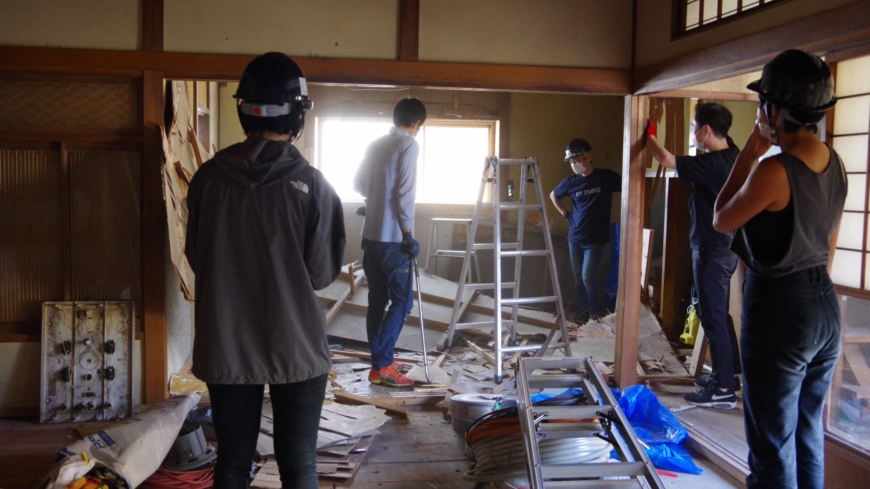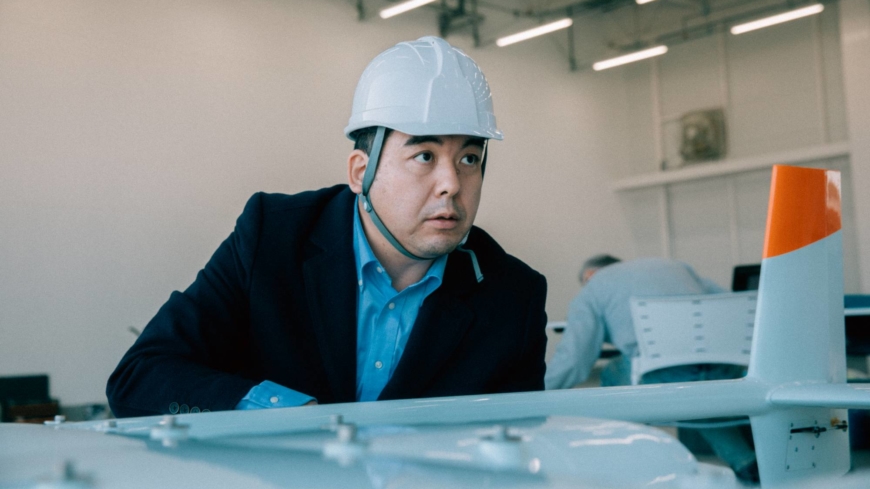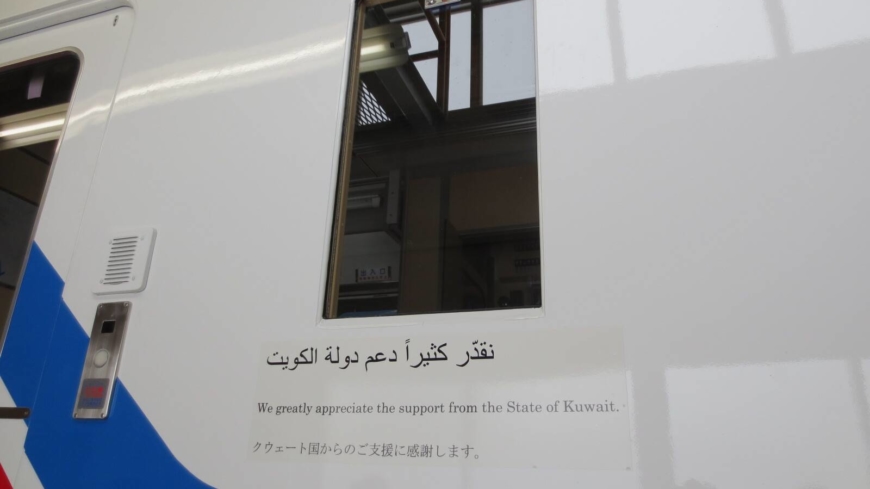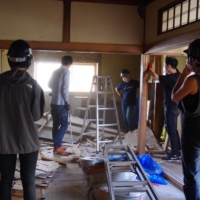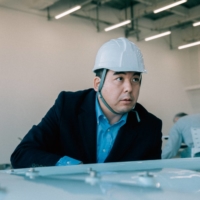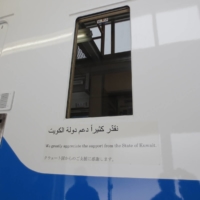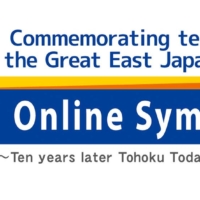Ten years have passed since the Tohoku region was rocked by the Great East Japan Earthquake on March 11, 2011. Reconstruction has steadily been in progress in Iwate, Miyagi and Fukushima, the three prefectures that were most affected by the earthquake, tsunami and nuclear crisis. People have been rebuilding their devastated towns, reviving their industries, and advocating food safety to combat the spread of harmful rumors. Through interviews with key people in various fields, the progress of reconstruction in the three prefectures and their hopes for the future have come to light.
Iwate: Growth with grace
The unprecedented earthquake and tsunami shocked the world, and many reached out to the affected areas not only from within Japan, but also from abroad to offer assistance. After its entire train line was ravaged by the tsunami, the Sanriku Railway was able to resume operations in three years with help from Kuwait and other countries and now serves as a symbol of the area’s recovery. Ichiro Nakamura, representative director and president of Sanriku Railway Co., expressed his gratitude for the support from across the globe. “I hope people from all over Japan and the world will visit Sanriku, take a ride on the fully rebuilt Sanriku Railway and enjoy what we can offer,” Nakamura said.
The material damage looks catastrophic, yet the invisible damage caused by rumors can be more harmful. Although consumer trust is being regained through rigorous radiation testing, it will take time to recover from the decline in the number of farmers and the industry as a whole. To achieve a “true recovery,” Yukinori Shitautsubo, who runs a local fishery in the town of Hirono, is striving to open up the future of the region for the next generation. “Customers are beginning to understand and re-evaluate the safety and quality of our marine products. We are now aiming to develop a fishing industry known to the world for its quality products.”
Shiawase Farm in the city of Miyako was one of the first local businesses to start radiation testing in the immediate aftermath of the disaster and is now free from the obligation. Looking over his pasture where animals are peacefully grazing, Representative Director Chikara Sato is envisioning new possibilities in agriculture, such as farm stays and environmentally friendly farming.
Miyagi: Bloom in adversity
Although the fishing port in Kesennuma suffered severe damage from the tsunami, marine products around the area were not affected by radioactive materials. With nationwide support, such as the dispatch of fishermen, and strong solidarity in the local community, they managed to maintain their position as Japan’s largest producer of fresh bonito. The oyster farming industry, which was once in danger, is now producing better oysters than before, as the disaster provided an opportunity to rethink conventional production methods. “Our farm used to be overcrowded, which reduced our productivity. It was only when we lost them that we truly appreciated the blessings of nature,” oyster farmer Kiyohiro Goto said. Starting anew, they invented a method to grow oysters in a shorter time frame in the year, which resulted in lower costs and improved taste. In Ishinomaki, which suffered the most in the prefecture, local volunteers launched the Ishinomaki 2.0 project with the aim of creating “the world’s most interesting city.” The driving force generated by the creativity of the youth has attracted different talents and connected them to various projects, from a startup training IT engineers to a design firm renovating vacant houses. In addition, local furniture brand Ishinomaki Laboratory Inc. is advocating a do-it-yourself influenced design ethos, connecting the town to an ever-increasing roster of international designers and production partners. Gota Matsumura, representative of the Ishinomaki 2.0 project, shared his vision, “In order to be the world’s most interesting city, we need a culture that attracts interesting people and inspires them to carve out the future with their own hands.” Shifting from a disaster-stricken city to a model city for regional revitalization, those young forces embody the hopes of Ishinomaki.
Fukushima: Hope in the hurt
Fukushima Prefecture experienced an unprecedented combined disaster: earthquake, tsunami and nuclear crisis. To prevent this kind of tragedy from happening again and to showcase reconstruction efforts, the prefecture built the Great East Japan Earthquake and Nuclear Disaster Memorial Museum, a facility to pass on the records and memories of the disaster to future generations. Through exhibitions showing the transition of the number of tourists before and after the disaster and radiation tests for rice, visitors can grasp the enormity of the impact of the nuclear accident and the efforts being made to recover from it. To combat the reputational damage, Kato Farm Co., in Iwaki, has continued shipping bags of rice proven to be safe for consumption. Since 2015, very strict radiation safety levels have not been exceeded in Fukushima rice. On the other hand, nearly 4,000 people are still working to decommission the TEPCO Fukushima Daiichi Nuclear Power Station. Regular inspection and tests of radioactive materials in the air and ocean are conducted to monitor radiation levels around the plant and ensure they will not affect the rest of the world. According to one senior executive of TEPCO Holdings Co., there are more places where workers can go on plant premises without protective gear, but it will take 30 years to completely decommission the reactors. The Fukushima Innovation Coast Framework aims to develop industries in six key areas as drivers for Fukushima’s recovery. These are: nuclear decommissioning; robotics and drones; energy, environment and recycling; agriculture, forestry and fisheries industries; medical technologies and health care; and aerospace. Within the framework, the Fukushima Robot Test Field was established as a base for the development, demonstration and rule-making for field robots for land, sea and air. Some companies use the site to test a newly developed flying car that can support manned flight, while other companies test drones that can inspect and repair bridges with the help of artificial intelligence. Terra Laboratory Co., which recently moved to the area from another prefecture, is a beacon of hope for the local industry that is promoting research and development of long-range unmanned aerial vehicles for use during disasters. The company’s CEO Takahide Matsuura said: “By introducing long-range unmanned airplanes at low cost, gathering information will be much quicker even when a disaster occurs in an area where it is difficult to deploy airplanes. This is the place where the dreams of scholars and researchers, who aspire to save people from disasters with robot technology, come together. This dream should not end just as a dream. We must strive to create a major robotics industry here in Fukushima.”
People in Tohoku are known for their patience. In the 10 years since the calamity, the reconstruction efforts in Iwate, Miyagi and Fukushima have exemplified their indomitable spirit written about by the renowned Iwate poet and writer Kenji Miyazawa (1896-1933) in his masterpiece “Ame ni mo Makezu” (“Unbeaten by Rain”). For them, reconstruction is no longer a goal, but a milestone on the road to the further development and bright future of the region.
For more information on reconstruction efforts, please visit: https://www.fukko-pr.reconstruction.go.jp/2021/imagining/index.html
This article is sponsored by the Reconstruction Agency, which has launched a dedicated web portal that provides a variety of content, including online symposiums, to express its gratitude for the support Japan has received from all over the world and to share the current status and future prospects for the disaster-stricken areas. This will also help in promoting reconstruction and the lessons learned from those experiences to prepare for future disasters. For more information, please access the website below.
Web portal commemorating ten years since the Great East Japan Earthquake URL: https://www.reconstruction.go.jp/10year/en/index.html
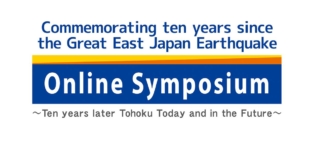
URL: https://www.reconstruction.go.jp/10year/en/online-symposium/



